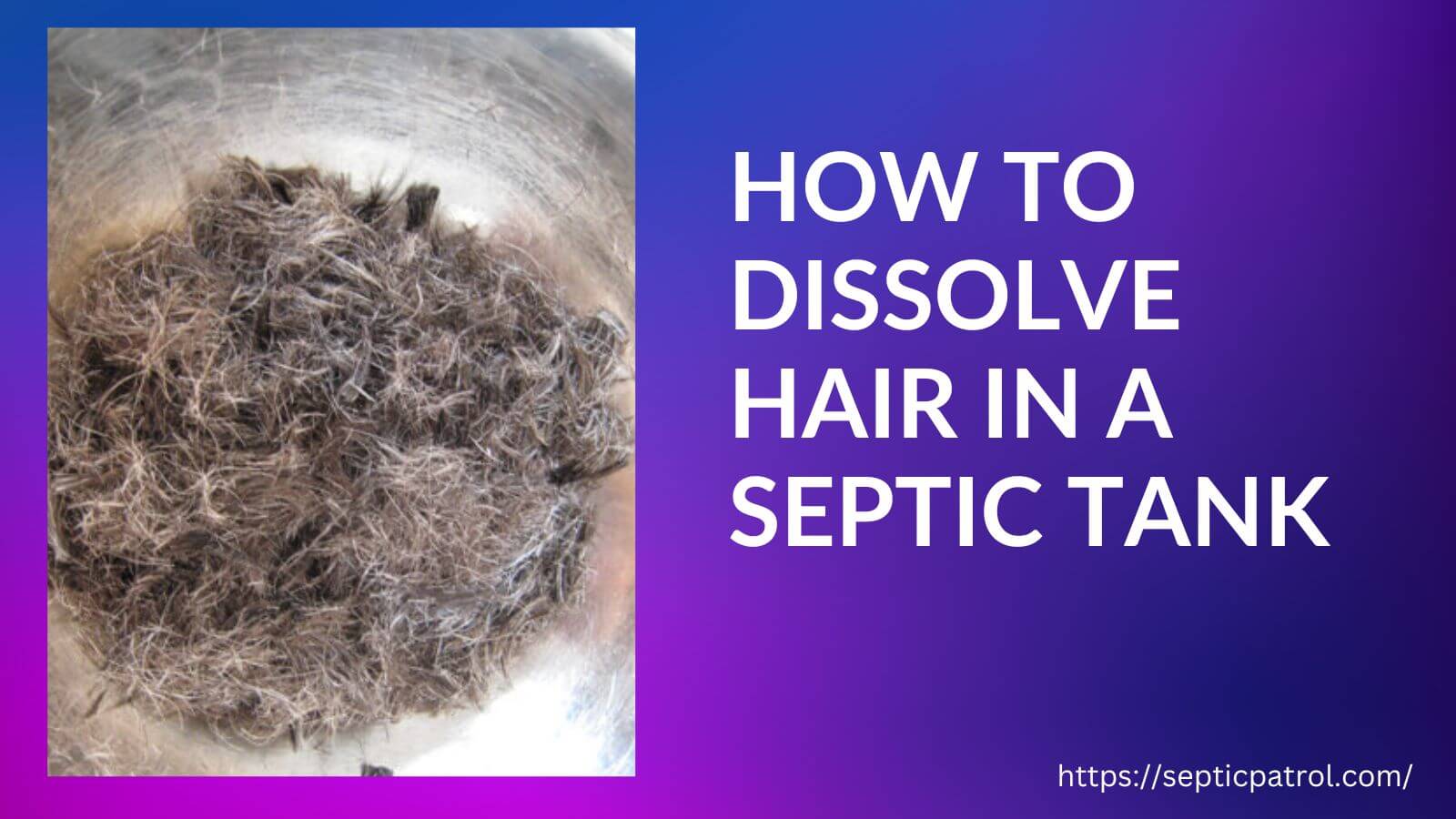Your home’s septic system makes wastewater disposal hassle-free.
Whether you live off the main sewage network or have poor drainage in your area, having one will make your life easier.
The system typically collects organic waste and wastewater in an underground tank and breaks it down to the point that it can be safely released to a drain field.
This only happens if your septic system is well-installed and maintained.
To keep your septic tank effective at disposing of waste, you have to be careful about what goes into it.
While it breaks down waste efficiently, it is not designed to handle every kind of waste.
Take hair, for instance. Its complex chemical composition doesn’t allow it to be emptied into the septic tank.
I will tell you why below and how to dissolve hair if it gets to your septic tank.
How Hair Affects Your Septic System
You probably don’t know this but your hair strands are composed of 95% protein strands called keratin.
These are helix-shaped fibrous proteins found in nails as well.
The protein is tough and insoluble in water.
While this is a plus for you (keeps your hair protected), it is a septic tank’s nightmare.
The septic system is designed in such a way that waste is broken down by bacteria.
Things like human feces, urine, and soap scum are easily decomposed into effluent water that is safe for the environment.
Hair, on the other hand, presents a challenge as it doesn’t break down due to bacterial action.
Inside a septic tank and its pipes, hair strands will remain intact for months (even years).
A few strands would probably cause no harm. However, when large hairballs collect at any point of the septic system, they block the smooth passage of waste.
This causes clogging – a problem that is quite a challenge to deal with.
Not only does clogging cause backups but it can compromise the effectiveness of the septic system and cause wastewater to flow to the ground or seep into the water table.
Does Hair Decompose In Septic Tank?
To say that hair will never be found in your septic tank would be a total lie.
You’ll have to shave your hair over the bathroom sink at some point. On other days you or another member of the family will pet the cat or dog and have hair all over the bathroom.
How about the many times people in your household wash their hair in the shower or clean their hairbrushes?
What then? How do you keep hair from clogging your septic system? Most importantly, does hair decompose in a septic tank?
Due to the intricate protein nature of hair, it is not easily broken down by bacteria.
That explains why hair doesn’t deteriorate in dead bodies for hundreds of years.
In a septic tank, waste is processed in the tank for 24-48 hours before the effluent is drained.
This is too little time to process hair to the point that it becomes a liquid and joins the effluent layer of the septic tank.
How to Dissolve Hair in Septic Tank

Although septic tank bacteria cannot dissolve hair, there are some products that can do the job. These include the following:
1. Bleach
Bleach is typically used to dissolve stains in garments.
However, it also comes in handy when getting rid of germs and, you guessed it, dissolving hair in septic tanks.
Bleach essentially breaks the chemical bonds of the different amino acids and cysteine in hair.
The sodium hypochlorite—the component that makes up bleach—is alkaline and reacts with hair to produce water and salt.
The reaction produces chlorine gas in the process. As such, it is wise to use a gas mask to protect your lungs when using bleach to dissolve hair in your drains.
See this video on how bleach breaks down hair.
2. Strong Acids
By strong acids, we mean sulphuric and hydrochloric acids.
Plumbers sometimes use these to dissolve hair and other tough wastes in drains.
Most chemical actually cleaners have varied concentrations of both acids in their formulations.
They expertly break apart keratin in hair.
Sadly, using these products can cause severe eye irritations and skin burns.
Additionally, they can corrode your pipes and tank over time.
3. Caustic Soda
Caustic soda or sodium hydroxide is yet another common ingredient in almost all cleaning products at home.
These include shampoos, soaps, hair relaxers, hair dyes, and drain cleaners.
Liquids with a high concentration of caustic soda break down viruses, bacteria, and hair proteins.
How Long Does It Take For Hair To Dissolve In A Septic Tank?
Generally, it takes about an hour for bleach to dissolve hair it comes in contact with. Caustic soda takes about the same time.
Obviously, if you have lots of hair, you may need more time.
Acids act fast meaning they need less time to dissolve hair.
You Are Better Off Removing Hair Mechanically
Hair is not one of the allowable septic tank raw materials. It is too strong for bacteria to break down.
The only way of dissolving it is by using the harsh chemicals mentioned here.
However, the biggest drawback of using them is that they will kill bacteria found in your septic tank.
Bacteria are important to the working of your septic system. Killing them would be rendering it ineffective.
You are better off removing hair mechanically using snakes or creating filters and other barriers to trap them before they reach your drains.
